Your cart is currently empty!
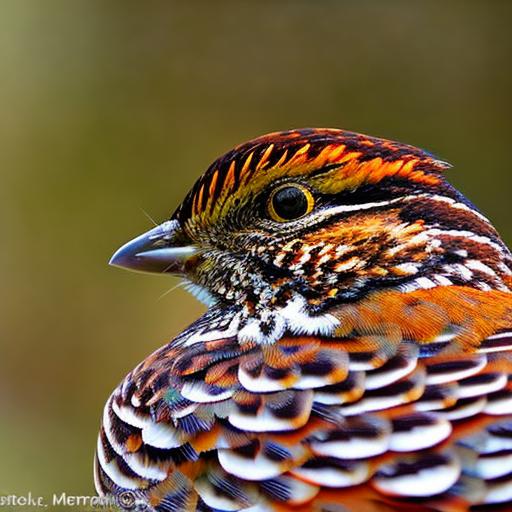
Unlocking the Secret Menu: What Does a Ruffed Grouse Eat to Boost Your Hunting Success?

Table of Contents
Introduction
There’s a certain thrill in the pursuit of the ruffed grouse, a game bird known for its elusive nature and uncanny ability to blend into its surroundings. The rustle of leaves, the fleeting shadow, and then… silence. As an experienced small game hunter, I’ve spent countless hours in the woods, and I can tell you: understanding your prey is half the battle. The ruffed grouse is no exception. One of the most overlooked aspects of hunting these wily birds is understanding what they eat. It might seem inconsequential at first – why does it matter what’s on their menu? But dig a little deeper, and you’ll find a world of strategy waiting to be unlocked.
Imagine being able to predict their next move or set the perfect bait, all because you took the time to delve into their dietary habits. For hunters, both seasoned and green, knowledge of the grouse’s secret menu can drastically elevate your game. In this article, we’re going to uncover the fascinating world of what the ruffed grouse eats, revealing secrets that can transform your hunting expeditions from mere chance to expertly strategized pursuits. Let’s embark on this culinary journey through the forests, shall we?
The Basic Diet of the Ruffed Grouse
Alright, let’s dive right into the tasty tidbits of what makes up the primary sustenance of the ruffed grouse. If you’ve spent any amount of time hunting or observing these birds, you’ve likely noticed they aren’t particularly fussy eaters. But knowing the specifics of their diet can give you that extra edge, especially when you’re trying to track or bait them.

Leaves and Buds: If there’s one thing grouse love, it’s leaves and buds. Especially during the warmer months, these birds go absolutely nuts for the succulent green stuff. Poplar, aspen, and birch are top on their list. Come winter, they often switch over to the buds of these same trees. As an anecdote, I remember one particularly cold winter day where I spotted a group feasting on some aspen buds. They were so engrossed that they hardly noticed me – a rare treat for someone trying to get up close!
Insects and Critters: In the warmer months, especially during their chick stage, insects are a major part of the grouse diet. Ants, beetles, grasshoppers, you name it! If it’s a bug and it’s on the forest floor, it’s fair game. This protein-packed diet is crucial for their rapid growth. If you’ve ever seen a ruffed grouse chick go after insects, you’d think they were at an all-you-can-eat buffet!
Berries and Soft Mast: When summer rolls around, and the forest bursts into a plethora of fruits, grouse take full advantage. Blueberries, raspberries, and the like make for a tasty treat. While they don’t rely solely on these fruits, it definitely becomes a part of their diet. And trust me, a grouse that’s been feeding on berries is a treat for the palate – but that’s a tip for another day.
Hard Mast and Seeds: Beyond the fruits, grouse will also consume acorns and various seeds they come across. This is more of a fallback option, especially in areas where their preferred food isn’t abundant. But it’s good to know – if you’re in an area rich in seeds and nuts, you might just come across our feathery friend.
A trick I’ve learned over the years is to pay attention to the food sources in the region you’re hunting. If there’s a particular tree that’s in bud, or a clearing full of fruit-bearing bushes, those are prime grouse spots. Like any creature, they’re driven by their stomachs. If you know what’s on the menu, you’ll have a better idea of where to find them.
Another tidbit from my years in the brush: grouse have a peculiar habit called “bud biting.” This is especially prevalent in winter. They’ll nip off the tips of twigs to feast on the tender buds. If you’re tracking through snow and notice twig tips littering the ground beneath some trees, there’s a good chance a grouse is nearby.
In all my years hunting small game, understanding my target has always been crucial. With ruffed grouse, their diet is a window into their habits and habitats. Whether you’re hunting for sport, for food, or just to observe, this knowledge can be invaluable.
Now, armed with this dietary dossier on the ruffed grouse, you’re one step closer to becoming the grouse guru of your hunting circle. Happy hunting, and remember, respect the bird and the brush. Every seasoned hunter knows it’s not just about the catch, but the journey and the knowledge gained along the way.
The Foraging Behavior – Timing and Habitats
Ah, the foraging behavior of the ruffed grouse. Now, there’s a dance of nature that’s a delight to decipher. You see, it’s not just about what they eat, but when and where they’re most likely to find it. Understanding these patterns is like having a cheat sheet for the hunting game.
Timing is Everything: You ever notice the forest seems to have its own rhythm? The ruffed grouse certainly does. Dawn and dusk are their prime-time foraging hours, especially during the summer months. As the woods come alive in the early light, these birds are out and about, searching for their morning meal. And just as the sun bids adieu, painting the sky with hues of orange and pink, the grouse are at it again, ensuring they fill up before the stealthy cloak of night envelops the forest. If you’re looking to spot or hunt these birds, these “golden hours” are your best bet. Plus, there’s the added benefit of experiencing the serene beauty of the wilderness at these times. Win-win, I’d say!
The Habitat Lowdown: Now, if timing is the ‘when’, habitat is the ‘where’. And boy, are these birds picky about their dining locales! Young forests with dense underbrush are the grouse’s go-to spots. This environment not only offers a smorgasbord of their favorite foods but also provides much-needed cover from predators. Think about areas rich in aspen, alder, and birch; these places are like gourmet restaurants for the grouse. They love the tender buds of these trees, and the dense foliage is just what they need to remain elusive.
Now, come winter, when snow blankets the ground and food becomes scarcer, our feathered friends adjust their strategy. They’ll forage closer to the ground, seeking out any leftover berries or greens, often diving into the snow for cover or to unearth hidden treats. They’ll also munch on the catkins of hazelnuts and the buds of hardwood trees. Snow-laden landscapes with signs of these dietary shifts can be hotspots for hunters.
A little pro-tip from my many forays into the wild: Find a clearing or edge habitat where two different types of landscapes meet, like a young forest abutting a meadow. Grouse often frequent these transition zones, benefiting from both environments.
In all, understanding the foraging behavior of the ruffed grouse, in terms of timing and habitat, is like getting an insider’s view into their daily life. And when you’re in tune with their routines and preferences, not only do you stand a better chance of a successful hunt, but you also get to deeply appreciate the intricate dance of nature. So, next time you’re out in the woods, keep an ear out for the beat of the grouse’s drum and an eye on the places they love to dine. Happy hunting!
Expert Baiting Tactics Using Their Diet
Ah, baiting tactics, the subtle art of enticing our feathery friend, the ruffed grouse. The age-old adage, “you are what you eat,” isn’t just reserved for us humans. By understanding what tantalizes the tastebuds of a ruffed grouse, you’ve got the edge in creating the perfect bait setup. Let’s get into the nitty-gritty of it, shall we?
Tasty Treats to the Rescue: If there’s one thing grouse can’t resist, it’s their favorite foods. Remember those leaves and buds we talked about? Aspen, birch, and alder buds are like gourmet chocolates for them. During early spring or late winter, scatter some buds in an area with good cover but with clear sightlines for you. Watching a grouse delicately nibble on these can be both an exhilarating and amusing experience.

The Insect Lure: In the warmer months, when chicks are scampering about, insects become a high-priority food item. While you can’t exactly scatter live insects around, consider using insect imitations or even soft, squishy bait that mimics the texture and movement of insects. Place them in open areas near the grouse’s favored wooded spots, and wait. Patience is key here.
Berry Bliss: Come summer, when the forest floor is speckled with berries, using soft fruit baits can be a game-changer. Blueberries, raspberries, or any soft mast imitations can be a magnet for these birds. Not only do they love the taste, but the bright colors also catch their eye from a distance. Lay them out near their preferred foraging grounds and watch the magic unfold.
Camouflage & Care: When baiting, always ensure that your setup blends seamlessly with the surroundings. The ruffed grouse might have a voracious appetite, but they’re no fools. Any glaringly out-of-place bait will be given a wide berth. And on a more ethical note, ensure that the baits you use are non-toxic and safe. The last thing we want is to harm the very creatures we admire.
Related Questions:
- Are ruffed grouse more active during specific times of the day?
Yes, ruffed grouse are most active during dawn and dusk. These “golden hours” are when they primarily forage for food and are more visible. - Can understanding a grouse’s diet help in choosing the right hunting equipment?
Absolutely. Knowing a grouse’s diet can guide hunters in selecting the right baits and setting up decoys, which can influence the choice of equipment and strategies used. - How do ruffed grouse diets compare to other popular game birds?
Ruffed grouse primarily consume leaves, buds, insects, and berries. While other game birds, like pheasants or quails, might share some dietary overlaps, each has specific preferences based on habitat and available resources. - Are there any ethical considerations to keep in mind while using baits?
Yes, hunters should ensure baits are non-toxic and safe for the birds. It’s crucial not to harm the wildlife or alter their natural behaviors negatively. - How does habitat conservation impact the diet and population of ruffed grouse?
Habitat conservation preserves the natural food sources and shelter for ruffed grouse. A protected habitat ensures a steady diet and safe breeding grounds, contributing to a healthier, stable grouse population.
Summary
As we wrap up this foray into the culinary world of the ruffed grouse, it’s evident that knowledge truly is power. Understanding the intricate dance of their diet isn’t just a fascination; it’s an avenue to a more enriched and successful hunting experience. For both the novice and the seasoned hunter, these insights can make the difference between a fruitless trip and that triumphant moment when you spot the bird amidst the foliage, nibbling on its favorite treat.
But, beyond the thrill of the hunt, there’s something profoundly beautiful in comprehending the life of such an elusive creature. It paints a vivid picture of the grouse not just as our quarry, but as a vital part of the forest ecosystem. Their dietary habits, their preferred habitats, and their daily routines are all interwoven threads in the rich tapestry of nature.
For those of us who tread the woods and meadows, gun in hand, there’s an unspoken responsibility. It’s the duty to respect, cherish, and understand the creatures we pursue. By delving deep into the “secret menu” of the ruffed grouse, we don’t just enhance our hunting skills; we strengthen our bond with the wilderness.
In future hunts, as you find yourself nestled amidst the trees, waiting for that telltale rustle, remember this journey of discovery. Reflect on the aspen buds, the juicy berries, and the chirping insects that shape the life of the ruffed grouse. Because, in the end, it’s not just about the catch, but about the profound connection we forge with the natural world.
So, here’s to successful hunts, to newfound knowledge, and to the continuous dance with nature. Until the next adventure, my fellow hunters. Stay curious, and always tread with respect.

Herb has been a longtime lover of the outdoors. Whether it be hunting, camping, fishing or just getting outside to reset. Proud father and animal lover. Bourbon anyone?

by
Tags:
Comments
3 responses to “Unlocking the Secret Menu: What Does a Ruffed Grouse Eat to Boost Your Hunting Success?”
-
[…] Share your stories, learn from your peers, and never stop being curious. Here’s to many more successful hunts, and may the forest always whisper its secrets to you. […]
-
[…] shoot rabbits for a quick and humane kill. Understanding this is crucial, as it not only ensures a successful hunt but also respects the game and the environment. Rabbit hunting, while seemingly straightforward, is […]
-
[…] Look for vests with realistic mossy oak or other natural patterns for effective concealment in various hunting environments. The right camouflage design can make all the difference in getting closer to your target without being spotted, improving your chances of a successful hunt. […]

Categories
- Big Game Hunting (301)
- Deer (202)
- Reviews (3)
- Shooting (16)
- Slingshot (1)
- Small Game Hunting (42)
- Upland Hunting (126)
- Waterfowl Hunting (3)

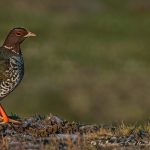
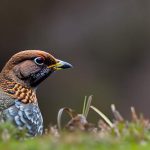
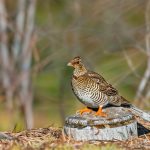
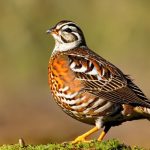
Leave a Reply